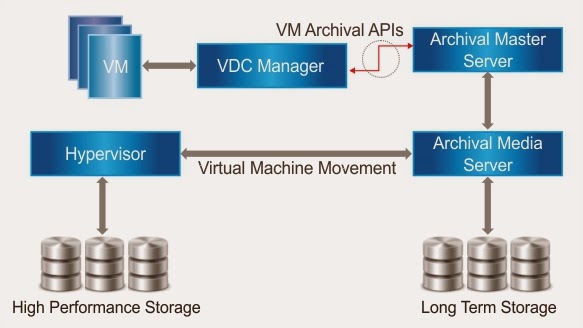Introduction of Virtual Machines (VMs) has wiped out the mandatory cap on the rate at which the server trail grew. However this led to the problem of VM sprawl, which essentially means persistent deployment and growth of virtual machines, some of which sit unused long after their useful lives. VM sprawl can cause unwanted consumption of:
- CPU cycles and memory resources
- Disk space, backup process time and bandwidth
- Expensive primary storage capacity such as Fibre Channel-attached storage-area network (SAN) disks
The problem of VM sprawl can be addressed by intelligent VM archiving. The process of VM archival starts with creation of what are essentially big files that represent disk images. The disk images are then archived and can be managed similarly to traditional archive data sets. The standardization of APIs for virtual machine archival enables integration of archival solutions into virtual environments.
- Virtual data center – E.g. vCenter server, SCVMM
- Archival software – E.g. Symantec Enterprise Vault
- Virtual data center (VDC) VM archival interface – Archival extension to existing APIs e.g. vSphere APIs, HyperV cmdLets, libvirt APIs
We at Calsoft help ISVs to enable VM archival and avoid wastage of top-dollar primary storage attached to virtual environments. Our offerings include VM archival and standardization of APIs for VM archival.
VM archival APIs particularly benefit backup and archival product vendors and server virtualization product vendors. Benefits include:
- Support various virtualization environments with minimal changes to archival product
- Entry to new market – virtual machine archival
- Opex and Capex savings for end users
Do you have anything more to share or discuss on VM archival? Write to us at marketing@calsoftinc.com







